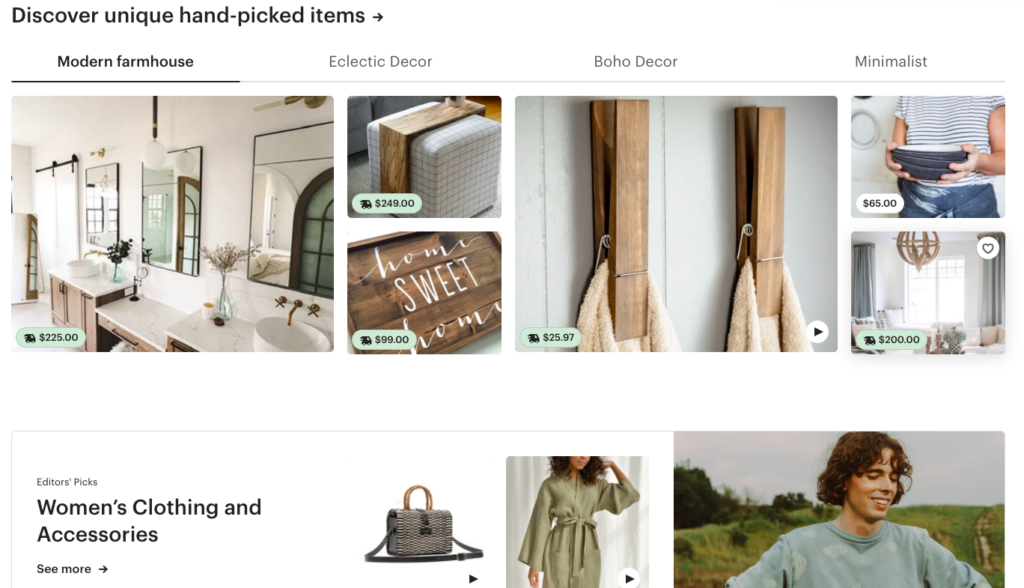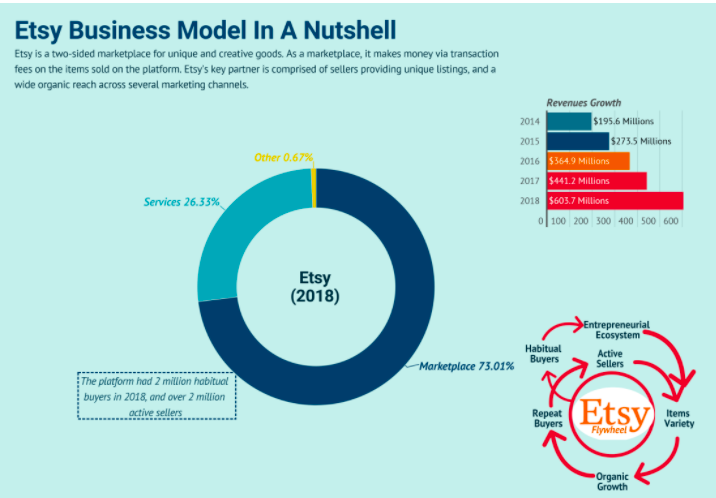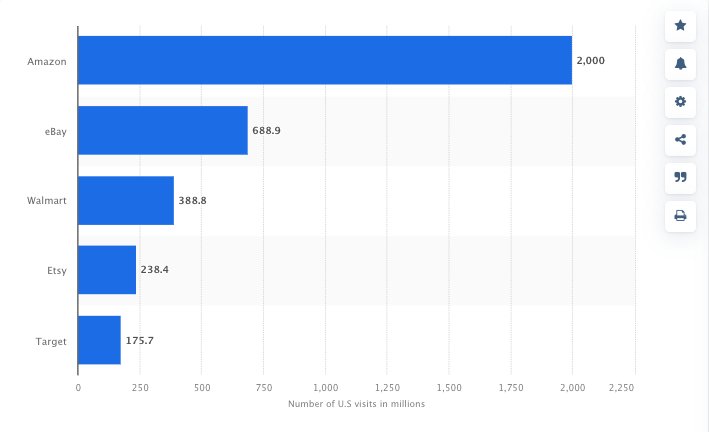Etsy: For all the Art-Loving Non-Artists

Etsy, much like Threadless, has successfully capitalized on network effects by building a community of buyers and sellers rooted in deep trust and quality to vouch for the same.
What is Etsy?
“Etsy is the global marketplace for unique and creative goods. It’s home to a universe of special, extraordinary items… We help our community of sellers turn their ideas into successful businesses. Our platform connects them with millions of buyers looking for an alternative—something special with a human touch, for those moments in life that deserve imagination.”
-Etsy//About
For the uninitiated, here is a look at the kinds of product offerings available on Etsy.


How it Works
Etsy is a two-sided marketplace with buyers and sellers.

Value Creation
- Establishing Trust
Etsy is a seller-first business and community – much like Threadless. The “creative” nature of the offerings lends itself to Etsy understanding the value of prioritizing its sellers as a means of capitalizing on network effects. This leads to a multiple-pronged approach to gain the trust of the sellers. The components of this approach are low fees, tools to help the sellers manage their shop, education, and support whenever you need it. They also have a seller protection program – recognizing that a lot of sellers on their platform are also small businesses that need trust and assurance to use the platform. Thus, there are overall low barriers to creating a shop for sellers – which attracts them to the platform.
For the buyers, the trust is reflected in the fact that about 40% of the buyers on Etsy are repeat buyers as of 2018. The trust factor is further developed by an active reviews system and complemented by a great buying experience – which aims to provide top-notch ecommerce experience even in the domain of unique, handcrafted, artistic products. This is even more critical as Etsy has a global reach – and often buyers are receiving products from different countries and need assurance and guarantee of quality and delivery.
2. Tackling Disintermediation
Disintermediation could have been a huge challenge faced by Etsy. However, it has by and large been able to successfully avoid it at scale for several reasons. First, the platform and the sellers have the same interests – to sell as many products as possible. By keeping its fees low and offering a global, extensive, and vast network of buyers while reducing the operating and transaction costs for sellers (as compared to them running a shop independently), they are able to retain their sellers. Some strategies used for this include optional offerings for sellers like promoted listings, Etsy shipping labels with discounts, Pattern (a program to build custom websites that is available to sellers) and Etsy Plus – a subscription service (currently priced at $10/month) that enables sellers to use enhanced tools and credits. Second, Etsy also provides immense value to its buyers by providing advanced search tools and algorithmic search results based on the user data acquired by the company. Given the nature of the product, Etsy as an intermediary has extremely intelligent data on buyer needs and preferences (more so than buyers and sellers sometimes). Further, many items on Etsy are of small value or one-time purchases – instead of regular purchases – which make disintermediation harder for buyers since the friction is higher, the product pricing is difficult to determine, and sellers might not have the tools to manage disintermediated requests outside of the Etsy system.
3. Building Network Effects
Much like the Threadless case, the above factors successfully enable Etsy to build network effects. Word of mouth based on positive selling and buying experiences recruits new users on both sides of the marketplace. Further, a bustling community is facilitated through reviews and support for artists. Given the nature of the product, the uniqueness, and the customization, there is pride amongst buyers in displaying how their purchase fits into their life – providing financial and non-financial support for the buyers.
Value Capture
Profit Formula: Etsy makes money from item listing, completing transactions between buyers and sellers, and the use of Etsy Payments to process payments, including foreign currency payments.
Competitors: In terms of industry, Etsy falls into e-commerce and competes with giants like Amazon. However, as of 2021 – even as a platform with a niche offering, it had the fourth-highest number of monthly visits in the US – indicating its strength and popularity as a platform.




Thanks for this post! I love Etsy and have gotten a number of gifts from them because they’re so unique. It’s amazing how, like Threadless, they’ve built a community of creators that seem to appreciate the platform rather than view it as a necessary but unfortunate middle-man. I particularly liked your point around how Etsy’s analytics is a big reason they can add value to sellers.